Australian Fungicide Resistance Extension Network (AFREN): fungicide resistance management targeted at regional level
Investment
Australian Fungicide Resistance Extension Network (AFREN): fungicide resistance management targeted at regional level
Australian Fungicide Resistance Extension Network (AFREN) will be formed through collaboration with participating organisations to deliver an integrated extension and communication solution for the training of growers and agronomists from each of the three GRDC regions (Southern, Western and Northern) on the key elements that drive the development of fungicide resistance to the currently available fungicide modes of actions and the strategies that can be implemented to manage fungicide resistance.
- Project start date:
- 01/05/2019
- Project end date:
- 30/06/2022
- Crop type:
-
- All Crops
- Organisation
- Curtin University
- Region:
- North, South, West
- Project status
-
Completed
GRDC News
Update papers
- 18 Jul 2023, Fungicide resistance in wheat powdery mildew in Qld and NSW in 2022 - GRDC
- 20 Jul 2022, Barley diseases – what to be on the lookout for - GRDC
- 13 Jul 2022, Cereal disease update 2022: Septoria of wheat, net blotch of barley and fungicide resistance - GRDC
- 21 Feb 2022, Cereal disease update 2022 - GRDC
- 21 Feb 2022, Keeping fungicide resistance in check and managing septoria tritici blotch in the low rainfall zone and medium rainfall zone - GRDC
- 16 Feb 2022, Fungicide resistance update - national situation and issues for the northern grains region - GRDC
- 18 Aug 2021, Fungicide resistance – what can we learn from previous experiences - GRDC
- 18 Aug 2021, Cereal disease update 2021 - GRDC
- 13 Jul 2021, Fungicide resistance in wheat powdery mildew across NSW and northern Victoria in 2020 - GRDC
- 12 Jul 2021, Cereal disease update 2021 - GRDC
- 23 Feb 2021, Cereal disease update 2021 - GRDC
- 15 Feb 2021, Fungicide resistance in cereals – problem pathogens and strategies to deal with them - GRDC
- 21 Jul 2020, Crop diseases – what to look out for in 2020? - GRDC
- 30 Jun 2020, Tasmanians are on the frontline of fungicide resistance – what options are available to ‘slow the train’? - GRDC
- 24 Feb 2020, Cereal disease update 2020 - GRDC
Resources
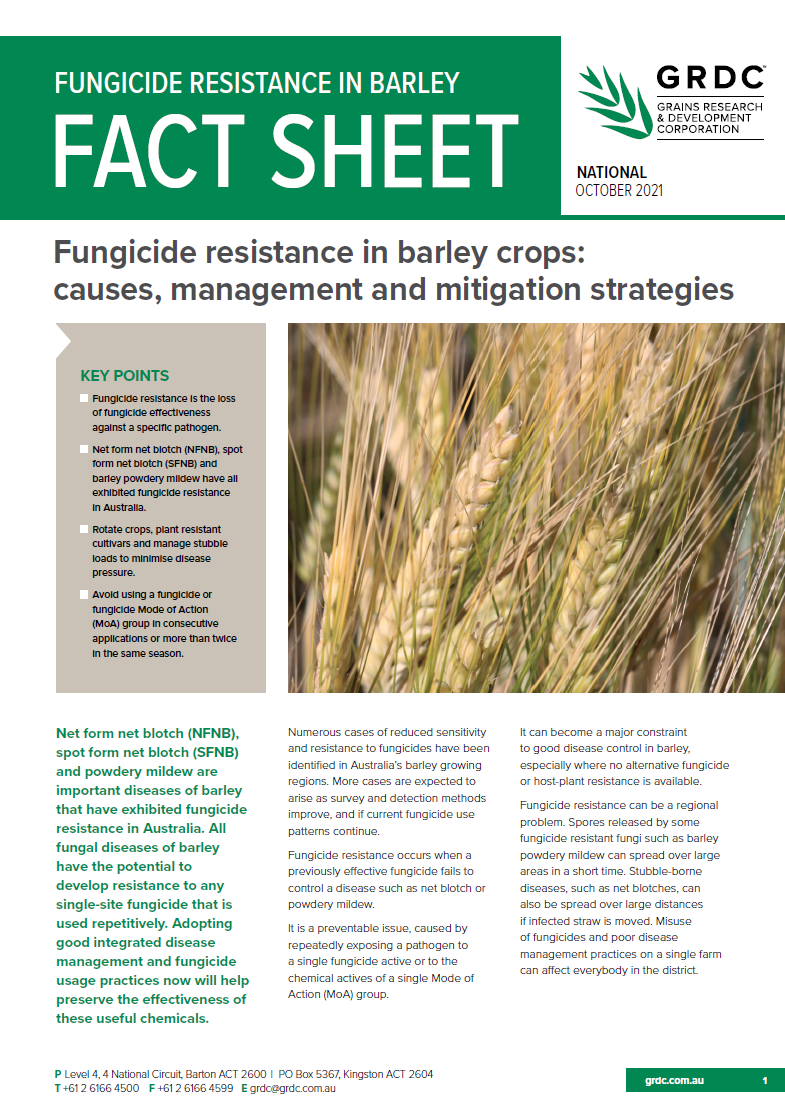
Fungicide resistance in barley - GRDC
Net form net blotch (NFNB), spot form net blotch (SFNB) and powdery mildew are important diseases of barley that have exhibited fungicide resistance in Australia.
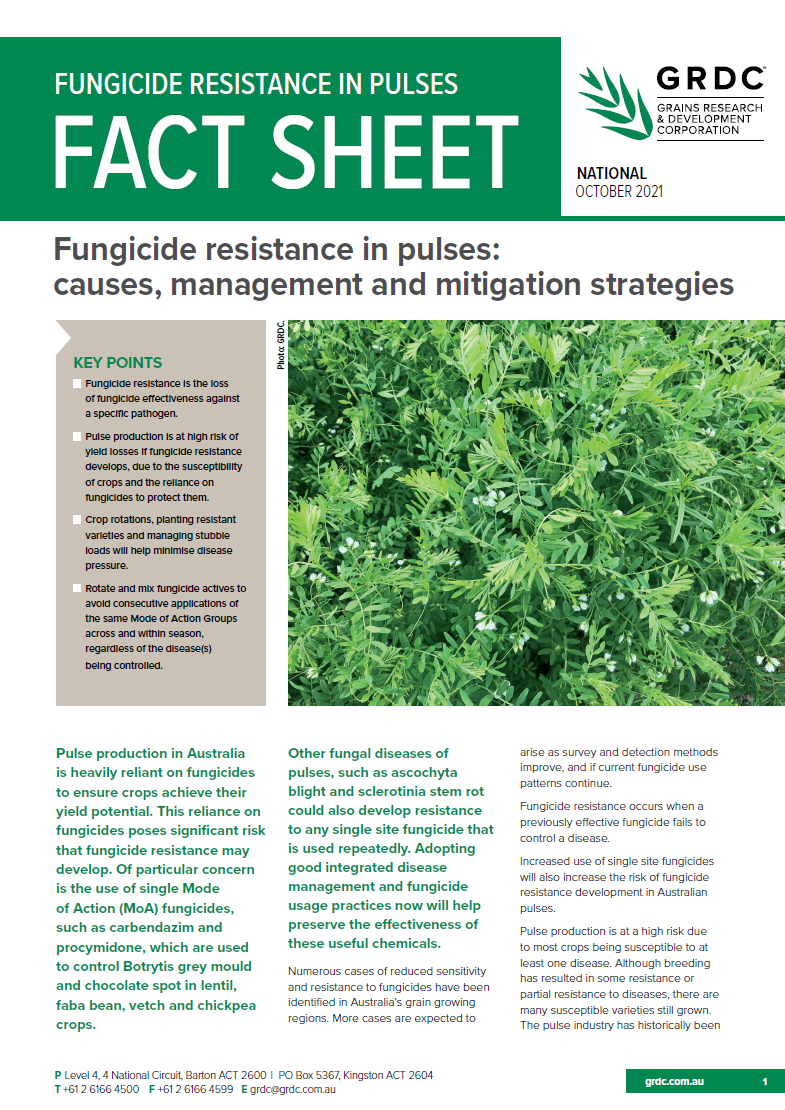
Fungicide resistance in pulses - GRDC
Pulse production in Australia is heavily reliant on fungicides to ensure crops achieve their yield potential. This reliance on fungicides poses significant risk that fungicide resistance may develop.
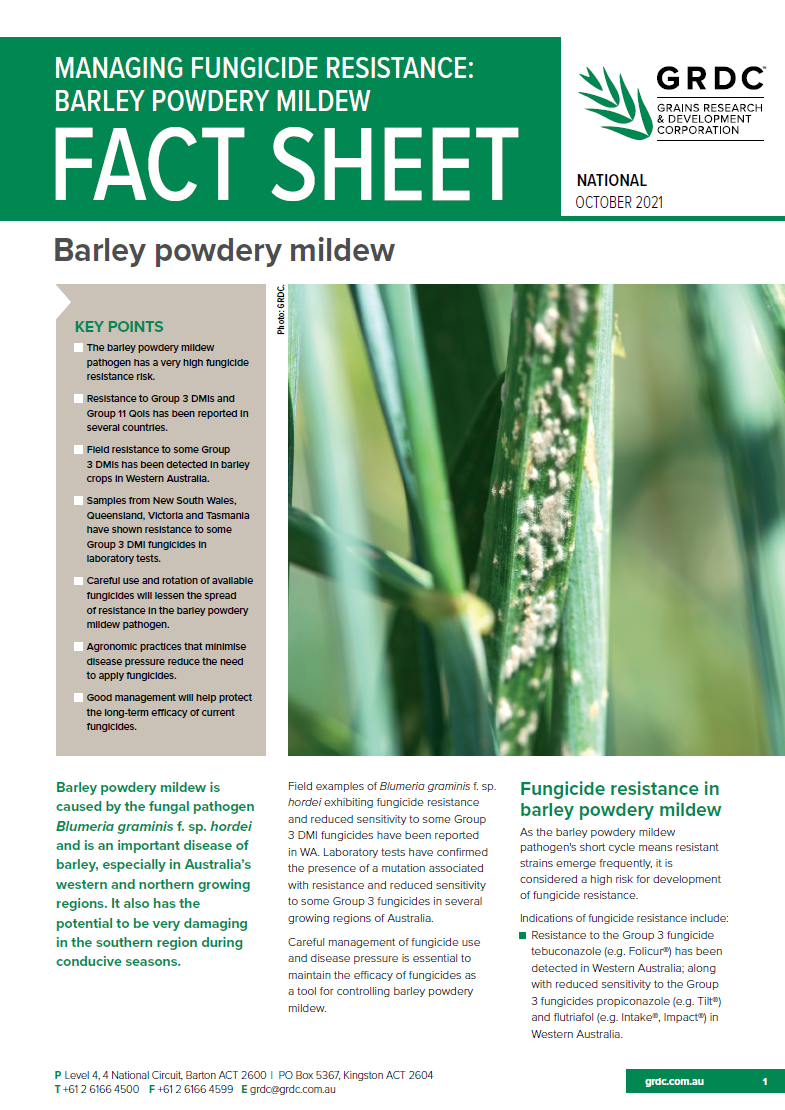
Managing fungicide resistance: barley powdery mildew - GRDC
Barley powdery mildew is caused by the fungal pathogen Blumeria graminis f. sp. hordei and is an important disease of barley, especially in Australia’s western and northern growing regions. It also has the potential to be very damaging in the
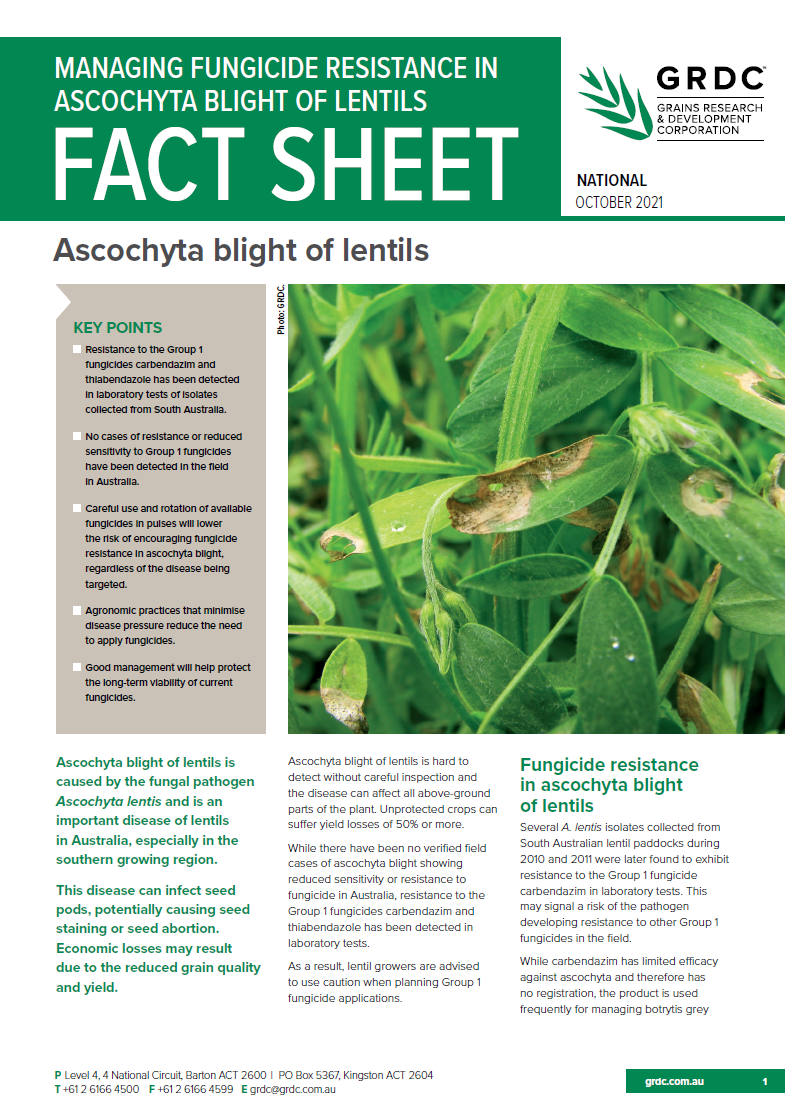
Managing fungicide resistance in Ascochyta blight of lentils - GRDC
Ascochyta blight of lentils is caused by the fungal pathogen Ascochyta lentis and is an important disease of lentils in Australia, especially in the southern growing region. This disease can infect seed pods, potentially causing seed staining or
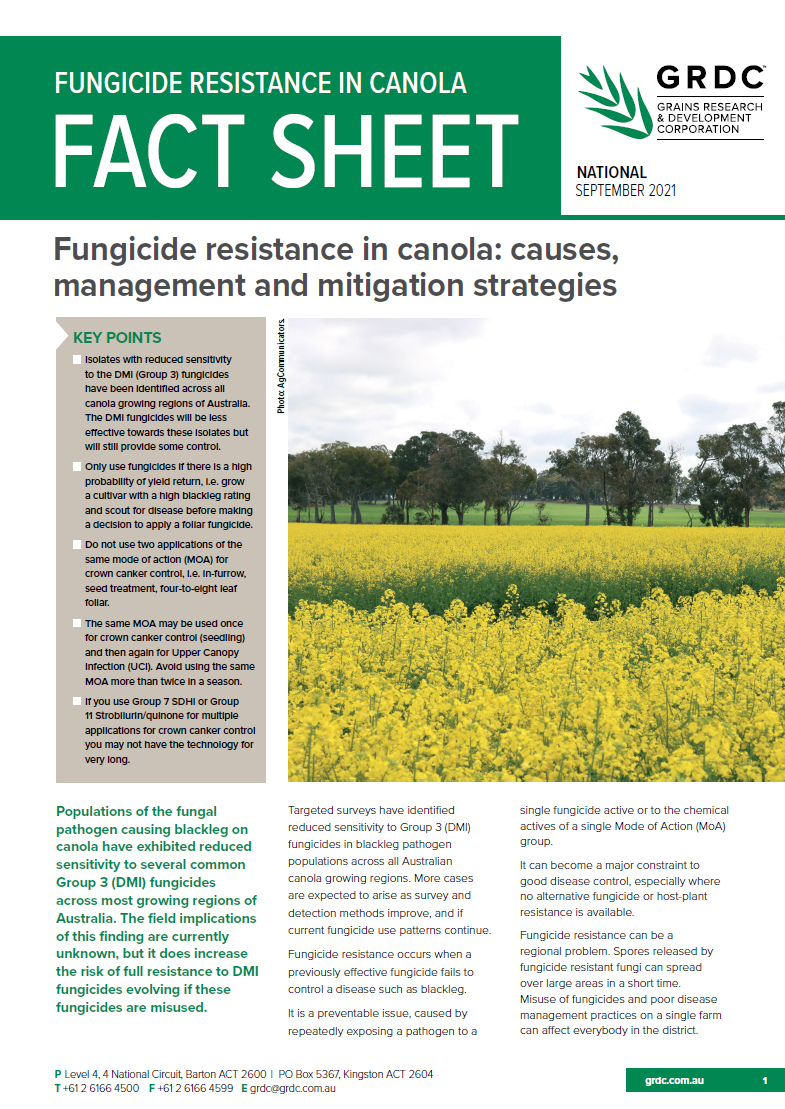
Fungicide resistance in canola - GRDC
Populations of the fungal pathogen causing blackleg on canola have exhibited reduced sensitivity to several common Group 3 (DMI) fungicides across most growing regions of Australia.
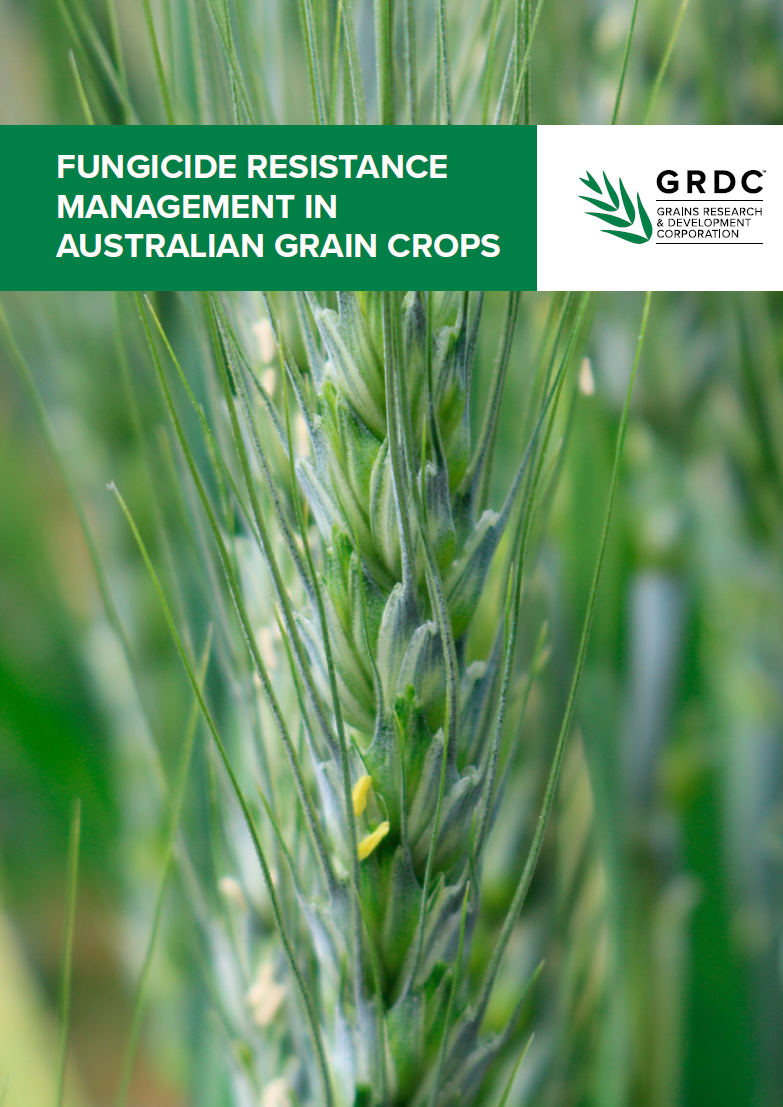
Fungicide resistance management in Australian grain crops - GRDC
The Australian Fungicide Resistance Extension Network (AFREN) is a collaborative network of Australian grains industry stakeholders with an interest in, and responsibility for, the development and delivery of integrated and regionally specific
External resources
The Australian Fungicide Resistance Extension Network
The Australian Fungicide Resistance Extension Network has been established to develop and deliver fungicide resistance resources for grains growers and advisers across the country. It brings together regional plant pathologists, fungicide resistance experts and communications and extension specialists.
